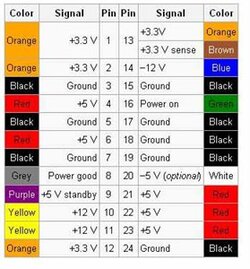I am curious (always kills my cat) about how much Amperage my computer is using and also how many watts it using. I have a 700w Coolmax Greenpower which is supposedly 85% efficient or better (sure sure). I have a high-end Home theatre system plugged into the same circuit in the room as well as a fridge (!, I know.. i know.. but it's the only way to keep beer cold next to the couch) I've seen my home theatre draw as much as 7 amps before and i'm sure the fridge is uber unefficient.. (i don't pay the bill  ) Now that I have my computer upgraded (see sig for details) I wanna know how close to the 15amp mark i am and how close to a firey death in my sleep i am
) Now that I have my computer upgraded (see sig for details) I wanna know how close to the 15amp mark i am and how close to a firey death in my sleep i am 
SO I have a fluke true rms 76 multimeter.. and i'd like to utilize this in order to figure these things out if i could.. but i read this thread which helpful as it may be.. not so helpful for my needs.
Multimeter: http://www.industrialelectronics.biz/fluke/248.htm
Can someone help? I took ME in college and i understand OHM's Law well.. but the real question is how to take the readings properly with my multi without causeing fire, death, and worse embarrassment.
Thanks!
SO I have a fluke true rms 76 multimeter.. and i'd like to utilize this in order to figure these things out if i could.. but i read this thread which helpful as it may be.. not so helpful for my needs.
Multimeter: http://www.industrialelectronics.biz/fluke/248.htm
Can someone help? I took ME in college and i understand OHM's Law well.. but the real question is how to take the readings properly with my multi without causeing fire, death, and worse embarrassment.
Thanks!





